To say nothing else of Iron Harvest, it is a world that instantly makes you pay attention. Based on the art of Jakub Rosalski (which is also where the world of the board game Scythe came from), Iron Harvest takes a rural, post-WWI Europe and drops gigantic mechs right in the middle of it. Looking at artwork and screenshots, you can’t help but get sucked in by curiosity.
Luckily, there’s a lot more to this RTS than just a pretty face. Iron Harvest has a pretty impressive real-time strategy skeleton underneath its veneer, with plenty of opportunities for players to adapt to and outwit their opponents.
Iron Harvest also provides hard enough counters that matches never feel totally lost; there’s always an opportunity to build up an army that can fight back against a complacent opponent.
We got our hands on a preview build of Iron Harvest, and we like what we’ve seen so far.
Mechanical Monstrosities

Iron Harvest is essentially a skirmish-style RTS set in the “World of 1920+.” It’s an alternate reality based in Europe after World War I, with factions loosely based on real-world countries.
The central powers in Iron Harvest are the nations Rusviet, Saxony, and Polania. Rusviet is an amalgamation of Soviet powers. Saxony is a combination of western European countries. And Polania is the somewhat scrappy underdog, sandwiched between the two massive empires.
All of this sounds like pretty standard RTS stuff, but what helps set Iron Harvest apart from the rest are its mechs. This is a world where Nikola Tesla has worked his magic, and huge, mechanical war machines roam the countryside.
Unlike the slick mechs you’ll see in some anime, however, these mechs are big, clunky beasts. They look like combinations of repurposed farm equipment and walking tanks. The first mech you encounter in the game is best described as a barrel with legs.
Watching these wobbly, clunky weapons of war steamroll across the battlefield, wiping out entire infantry battalions, is extremely satisfying.
Rock, Paper, Scissors
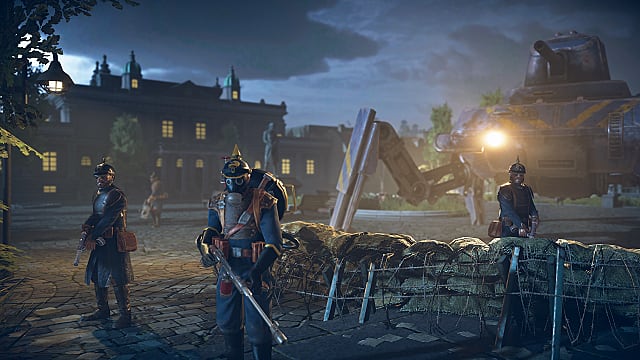
Even though the mechs are impressive, you won’t wield massive armies of them. You have a lot of other tactical options to take into account, and sometimes, a massive swarm of infantry groups is more successful than a handful of lumbering brutes.
Generally, your smaller troops have stronger tactical options, and their ability to maneuver and adapt to more situations allows them to be effective in the hands of a savvy commander.
Infantry units can serve different purposes, and each faction’s troops have a few varying details that help them stand out. For example, Polania’s basic infantry carries bolt-action rifles, while Rusviet’s infantry carries shotguns. In certain situations, you’ll find yourself wishing you had the troops your faction doesn’t have, and a huge aspect of finding success in Iron Harvest is putting yourself in situations where your troops have the advantage.
On top of that, troops can hide inside buildings, take cover against walls or in bushes, seek higher ground, and even lay out landmines, barbed wire, and other obstacles. If you kill an enemy unit, they may drop weapons that an existing unit can acquire and use, changing the makeup of your army on the fly.
Even a military composed of just a few engineers can put some serious hurt on opposing mechs if you strategize correctly by laying some traps, setting up an ambush, and avoiding detection in the open field. Brute force might overcome you, but a savvy strategy can trump superior firepower in Iron Harvest.
Economics 101
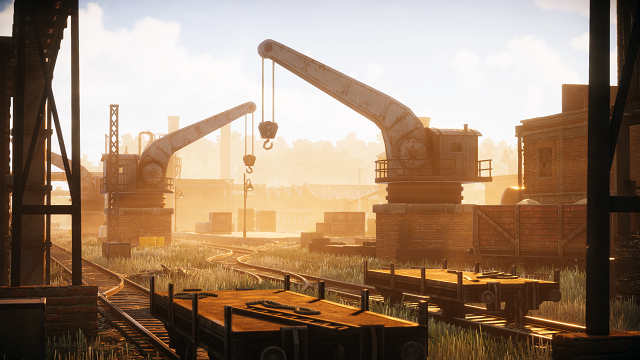
The economy and base building aspect of Iron Harvest is relatively simple, but it gets the job done. There are two resources to manage and a handful of buildings that let you churn out units and upgrades.
Having a strong economy is key to overcoming some missions, but Iron Harvest seems more focused on tactics and warfare than out-resourcing your opponent.
There are resource stockpiles scattered throughout the various maps, and there are also buildings you can “control” that give you a set amount of resources over time.
Controlling more buildings will give you more iron or oil per second, for example, and these buildings can change hands easily if not properly defended. At the same time, spreading yourself too thin over a map is just asking to be shredded by an opposing army.
A Winning Personality
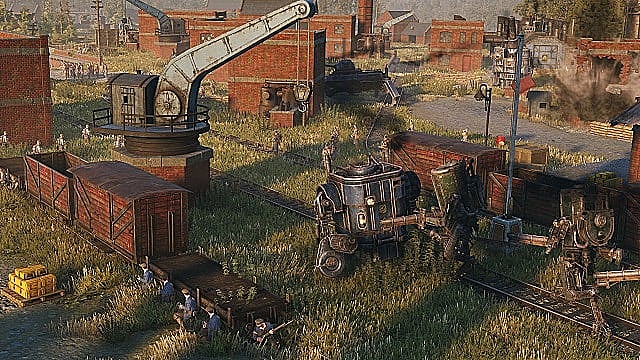
One of the trickiest aspects to get right in a strategy game is giving each faction its own identity but still managing to keep them balanced. This is one of the areas where, as of now, Iron Harvest stumbles.
There are some small differences in faction infantry units, and each faction has distinct mechs and heroes, but ultimately, they feel like reskins of one another. The difference between “shotgun infantry” and “rifle infantry” doesn’t make for much distinction. It’s a stark contrast to something like StarCraft, where each faction is distinct.
On one hand, this means you’ll be able to swap between factions without too much of a learning curve. On the other, it damages some of Iron Harvest‘s depth in the long run.
The hero units do offer a bit of personality, though, even if they don’t change up your strategies too much. Polania features a sharpshooting woman named Anna who has a pet bear named Wojtek; they make for a great combo of long-range damage and close-range tankiness. Saxony has a massive, AT-AT-esque mech called Brunhilde piloted by a salty commander named Gunter von Duisburg.
Nuts and Bolts
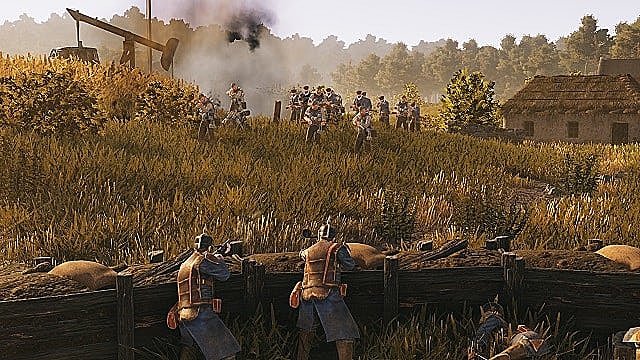
Iron Harvest‘s production values are solid, even if certain aspects of it feel a bit fast and loose. Troops, especially groups of infantry, don’t always behave like you think they will. Multiple times, I ordered my collected infantry to take cover behind a wall, only to watch them hop over it and take cover on the other side. That’s all well and good, but the enemies are on that side. Cover doesn’t work that way.
It’s easy to identify certain aspects at a glance, such as what weapons are hitting the battlefield, once you know the icons that represent them. Maps are surprisingly detailed, and unit graphics look pretty sharp even at medium distances. Get too close and you can pick apart the details, but that’s why you don’t zoom in that far in real-time strategy games.
The voice work is not phenomenal. The Polania and Rusviet factions sound a bit like if you asked a group of stage actors to imitate Soviet accents. And playing through the opening Polania campaign from Anna’s point of view is a bit irritating as well, as pretty much every character simply cannot believe your hero character is not a man. Yes, Anna is a girl. She can shoot. Isn’t that CRAZY?!?!
Time to Play
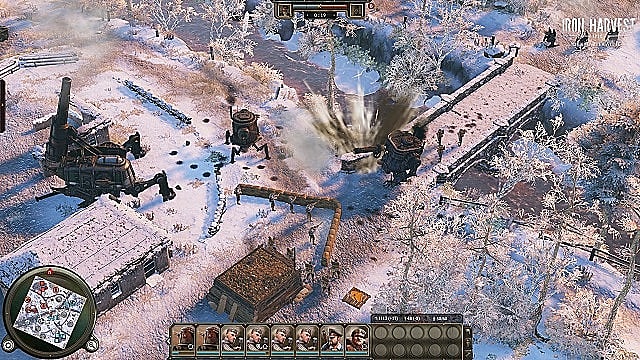
There’s an open beta of Iron Harvest, free to download on Steam, that contains a few of the early Polania missions. It’s definitely worth trying out to get feel for the game’s systems if you’re a fan of RTS fair.
Our press copy had a bit more to it: a few of the Saxony missions from later in the campaign and the ability to organize skirmishes with both of those factions and as the Rusviets.
The campaign seems like a pretty solid exercise, but a lot of the value of RTS games comes from how well the multiplayer works. Whether Iron Harvest is able to find that balance and personality in its factions will probably be the deciding factor in if it is worth a buy. Keep an eye on it, try out the beta, and check back here for a full review when it releases in September.







Published: Aug 12, 2020 04:13 pm